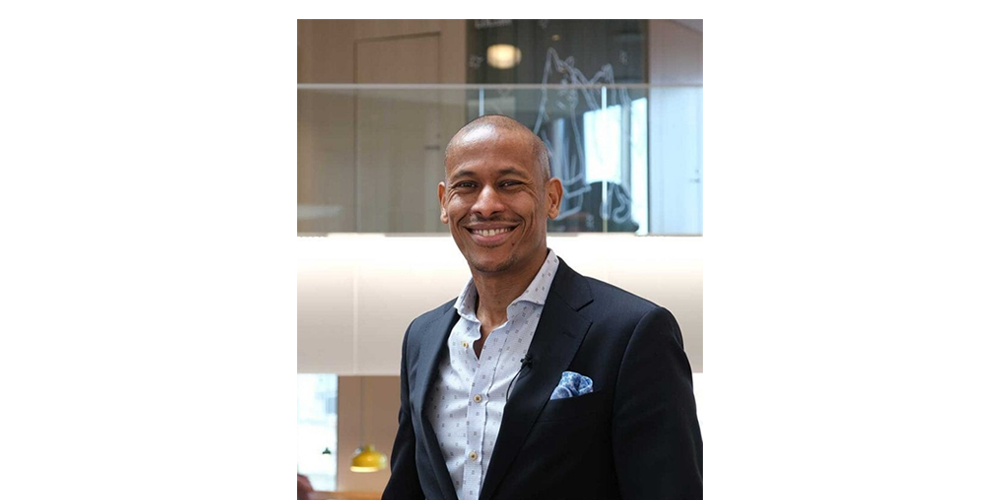Martin Svane
Why You Should Strive to Avoid Debt Collection
Recently Novus, a leading analysis and research company, conducted a survey showing that two out of three customers would think more positively of their supplier if they were sent reminders when bills were due. For companies that prioritize customer loyalty and lower churn rates, there is certainly room for improvement when it comes to debt collection management.
“It’s important to remember that every customer is unique, which is why debt collection management needs to be individualized.”
Solomon Seyoum, Manager of Customer Finance at Tre (one of Sweden’s leading mobile operators) and its sister brand, hallon, has already made great strides in his work with these issues. In this interview, Solomon shares his views on the future of debt collection management and what the path forward looks like.

Why did you start looking more closely at your debt collection management practices?
– At Tre, we’ve put a great deal of effort into boosting customer satisfaction, which permeates all of our business areas and the work that each of our employees do. Our starting point is that every customer is unique and needs to be treated as such. With that mindset and the right channel of communication, we have the best chance of boosting customer satisfaction and reducing churn.
The most common reason that a customer winds up in the debt collection process is a combination of lack of time and lack of willingness to pay. Which begs the question, why would you want to risk damaging the relationship with customers who ARE willing to pay by sending them reminders and putting them into the debt collection process?
“Instead of focusing on the value of the customers you’re losing, it’s easy to get distracted by the lure of short-term revenue”
Has changing your perception brought about improvements?
– At Tre, we’ve changed our way of thinking and our working methods, which is already generating results. A large portion of the claims that wind up with Kronofogden (Sweden’s debt enforcement agency) are associated with telecom companies, which is perhaps understandable given how important it is for each person to have a mobile contract.
We’ve made some significant changes as regards the number of claims we refer to Kronofogden, all of which is consistent with the broad sustainability approach that we use here at Tre and Hallon. Another clear example relates to how we work with customers 18-25 years old. Here, it is important that we work with each individual and their unique circumstances to settle any outstanding debt.
The media focuses quite a bit on the growing debt burden and on personal credit. Have you noticed any sort of general change in your industry?
– More companies need to shift their focus from accounts to customers, which involves a correct matching of the right action to the right customer. I’d venture to say that the views on debt collection are slowly changing and many of the players in our industry are starting to realize that this is an area where they need to improve. Of course though, it’s a big challenge for many to forfeit the revenue they earn from claims fees.
In my opinion, there’s much to gain by expanding efforts to reduce churn and increase customer satisfaction to include how customers are treated after the due date. The relationship between these things is often ignored, as are the major costs associated with picking the wrong customers to send reminders to, or sending them into the debt collection process. Instead of focusing on the value of the customers you’re losing, it’s easy to get distracted by the lure of short-term revenue.

How then, specifically, are you working based on each individual’s needs?
– We collaborate with an innovative supplier who shares our views on how to manage the debt collection process, which offers us greater flexibility. Together, we challenge each other to find optimal, tailored solutions for each customer. The outcome of that has been a lower number of debt collection cases.
What have been the clearest results you’ve achieved?
– Well, we can see that the changes we’ve made have reduced our churn rate, which means that fewer customers are leaving us in favor of the competition.
“Not charging late fees can save you the cost of a customer service ticket and simultaneously ensure that you maintain, or even boost, customer satisfaction.”
What are your biggest costs associated with debt collection management?
– One major cost is directly related to the number of customer service tickets, since many customers wind up contacting the customer service department when they get a payment reminder. We need to communicate with the right messaging at the right time, so that customers don’t feel the need to contact us. The biggest cost is associated with dissatisfied customers, followed by direct costs and the cost of customer service tickets.
What are your views on the pros and cons of using an inhouse solution compared to outsourcing?
– In general, the advantage with outsourcing is that you avoid maintenance costs and can more easily change and develop the solution over time. Our future solution will put higher requirements on a more dynamic process, where you test and evaluate different scenarios to ensure that you have a well-functioning process over time.
Is it possible to build a more dynamic solution yourself or do you need to purchase it?
–Yes, it is possible to do it yourself. But pulling together the IT resources can be challenging. So, it can be advantageous to purchase the service you need from a flexible partner who wants to develop in collaboration with you. As a rule, I’m not much of a believer in finished solutions since nothing is ever really “finished” because we live in a world that is constantly changing. A better solution is to find the right platform to plug into. That way, you avoid wasting internal resources on developing and maintaining your own solution and can focus on your core business instead.
Do you think that the rising churn rate among younger customers is linked to reminders and debt collection?
– Yes, I certainly do! They are generally more aware and amenable to change. They are also an enormously important target group. In the USA for example, gen Z is responsible for 30% of consumption. They also directly and indirectly affect decisions that their parents make.
How do you think the younger generation should be educated about payment reminders and debt collection?
– Well, it’s obviously important that this is done in a relevant and efficient way. For this target group, you need to send information and communicate when you send them invoices and reminders.
What do you need to achieve your goal?
– A dynamic debt collection process that can be changed and improved on an ongoing basis. We’ve already automated many parts of it. But adaptation and testing still needs to be made easier. Billogram is a shining example, because you offer us a solution that is both flexible and adaptable. Your invoices provide us with a way of communicating with customers who are having difficulty paying and help us encourage them to switch to a cheaper subscription.
“I’d rather use the funds required for covering the costs of reminders and debt collection to pay a few months of the customer’s subscription, or spend it on one of our additional services.”
Are there any projects you’re looking forward to in the near future?
– We are looking into various controls that will ensure that the cost of a reminder is proportionate to the size of the claim. When that is way out of proportion, you risk winding up with a dissatisfied customer who leaves you for a competitor. I’d rather use the funds required for covering the costs of reminders and debt collection to pay a few months of the customer’s subscription, or spend it on one of our additional services.
Finally, when do you think you will achieve your goals?
– For customers 18-25 years old, we’re striving to achieve our goal already this year. After that, we’ll be working just as hard with our other customer segments!
Billogram has been collaborating with the up-and-coming telecom company, Hallon (a subsidiary of Tre) since 2020. Read more about why hallon switched over to Billogram, and what results they've seen.**
Martin Svane